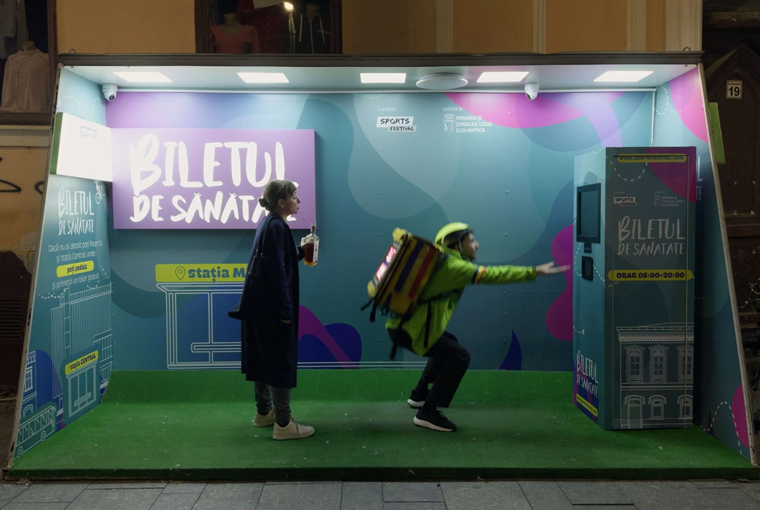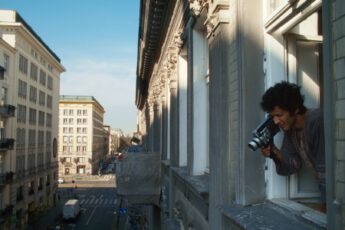
If the city is the world which man created,
it is the world in which he is henceforth condemned to live.
– David Harvey cites Robert Park1
Our cities both reflect and determine who we are and who we can be. This view of cities as both products and causes of society has become the foundation of political urban theory that envisions the design of cities as a tool for restoring power to the people. Urban planning is not just an ideologically neutral undertaking to solve problems, maximize utility, and distribute resources, as per the argument often extended by officials and technocrats, but the materialization of political agendas and social practices. The solutions proposed for urban problems navigate the clash between different financial, social, and political priorities. The astonishing scale of urbanization processes, both past and present, is neither inevitable nor commonly accepted as a beneficial outcome of technological advances, but the product of the prevailing balance of power between different political actors. As David Harvey, citing Robert Park, puts it, we “change ourselves by changing the city,” and we are “condemned” to live in the urban worlds we have created.2
Cinema picked up on these questions early on. The modern urban world of sprawling metropolises, anonymity, individualism, neon lights, and cinemas appeared in early American film noirs as imbued with a sense of existential angst tied to the loss of the small-scale, familiar world of the traditional city. In turn, science fiction has provided narrative tropes, visual codes, and a conceptual framework to envision urban dystopias. Fritz Lang’s Metropolis, Jean-Luc Godard’s Alphaville, Ridley Scott’s Blade Runner, and Alex Proyas’ Dark City, to name just a few films, depict fictional cities that condition their residents’ horizon of possibilities by imposing spatial and mental boundaries. Such urban worlds function as traps that encircle not only the bodies of city dwellers but also their minds, as even the idea of a different world lies beyond their reach.
Drawing a connection between sci-fi films and Radu Jude’s recent social drama Kontinental ’25 may seem stretched, yet the Romanian director dives into the heart of a realistic urban world that proves no less dystopian. The film opens with a homeless man’s long urban stroll through various areas of Transylvania’s capital Cluj, during which he asks for work and money and occasionally curses at random. As night falls, he retreats to his improvised home in the basement of an old building that was once used as a laundry room. Before dawn, he wakes up to the visit of a court worker accompanied by four gendarmes. The court worker politely reminds him that the day of his eviction has arrived and that she has arranged for a van to take him and his belongings to a shelter. What follows is a quick series of events: the man requests an extension, the court worker grants him an hour to pack, she steps out for coffee with the gendarmes, and upon their return, they find the man dead from a hurried suicide.
The scene proves traumatic for the court worker, Orsolya (Eszter Tompa). The building where the man lived is scheduled for demolition as a new European-funded hotel is to be built in its place. His presence on the premises had already delayed the plans. Thanks to Orsolya, the court had postponed his eviction for “as long as possible,” and she had done “everything in her power” to help the man, as everyone reminds her, yet she cannot help but blame herself for his death. These events set the stage for Orsolya’s quest to overcome her guilt, which occupies the rest of the film. Instead of joining her husband and children on their planned vacation in Greece, she stays in Cluj and tries different strategies to ease her troubled conscience. She seeks solace in conversations with friends and family, oblivion through sex with strangers, and redemption in religion. Yet nothing seems to work. Each of her conversations is framed as a long, continuous shot with slow and often repetitive real-time dialogue that leads nowhere. Orsolya and her fellow city dwellers seem too alienated from one another for meaningful connections to form between them so as to ease Orsolya’s trauma. Does the fault lie with them? Or does it lie with their city?
The film’s starting point, the man’s suicide, makes a concrete case for the argument that every large-scale urban project starts as an act of violence that destroys the world as it is. Like the man, something always needs to be sacrificed to give way to such projects. This view contrasts with public discourse that advertises any urban projects as motors of social progress, with officials talking of valuable public investments and charitable private initiatives. Residents are rarely involved in decision-making, a fact that frequently leads to local grassroots actions that may, once in a while, succeed in halting or postponing unpopular projects.3 Even rarer are the cases where urban reconstruction causes urban revolts, a link Harvey draws between the Haussmannian remaking of Paris and the Commune.4 In a profit-driven reality, the efficiency of the discourse on urban growth, coupled with real housing needs, often leads to cheap, hastily built constructions that disrupt or destroy the previously familiar, if dysfunctional, urban fabric, with little concern for aesthetic, social, or spatial cohesion. Kontinental ’25 suggests that what is destroyed in the process cannot simply be suppressed or forgotten; it becomes a specter haunting the city and its residents.
Cluj has a real-life history of suppressed stories. The region has changed administrations several times throughout the centuries and today has a mix of Hungarian- and Romanian-speaking populations, following its integration into “Greater Romania” in the early 20th century. Ethnocentric ideology, cultivated during the Communist period and further expanded by post-Communist nationalists, celebrated the city’s Daco-Roman heritage, evoked in its second official name (Cluj-Napoca), while largely suppressing its Hungarian heritage.5 That said, the film primarily addresses more recent urban issues. A homeless man becomes a nuisance because of his smell, disturbing the peace of a neighborhood undergoing gentrification; Roma communities living on the city’s margins depend on residents’ donations; and uncontrolled urban expansion transforms ‘nice’ neighborhoods into ‘ugly’ ones. Whether it is due to poverty, gentrification, or foreign investment, the current image of the city leaves us with a sense of disappointment and, worse yet, seems to steal something away from its residents, who appear powerless in the face of personal and social issues.
The editing and sound design further draw a link between the space of the city and the mental state of the characters. Conversations are frequently saturated with off-screen sounds, such as techno music or construction noise, often heard over the dialogue and evoking a kind of parasitic force that invades both the audible and mental space of these characters. Several silent shots of newly constructed buildings are inserted throughout the film, disrupting the linear sequence of events and reminding us of the urban context. Cluj appears as a city of miscommunication, unease, and disjunction, as memory, history, and trauma have shaped a dysfunctional urban world whose inhabitants struggle to regain a sense of agency. As in sci-fi urban dystopias, something is out of place, and this feeling prevents the residents from moving forward no less than the real social and economic hardships they face. In that sense, this version of Cluj is another Dark City that limits residents’ horizon of possibilities, while no revolt seems to be in sight.
In the end, Orsolya cannot escape this pattern either. She realizes that she cannot come to terms with the violence that led to the man’s death, and can only hope to forget. She therefore decides to join her family in Greece, a symbolic escape from the city and its traumas, however brief. Jude concludes the film with a series of shots of city buildings devoid of people, similar to the final scene of Antonioni’s Eclipse, where the protagonists disappear from the foreground, and the camera drifts through empty streets once occupied by the film’s characters. Antonioni’s choice has been interpreted as a poetic reflection on urban space and its capacity to host other stories after the film’s end, a clin d’œil to the viewer’s storytelling imagination. In Kontinental ’25, the ending evokes no such optimism as the images of the city come across as more cold than welcoming. The stories yet to unfold are at risk of echoing Orsolya’s deep disillusionment with the city’s current state and likely future.
- Harvey, D. (2012). Rebel cities. Verso, pp. 4–5. ↩︎
- Harvey, D. (2008). The right to the city. New Left Review, 53, 23–40. ↩︎
- For instance, the movement against the construction of a new metro station in Athens resulted in the provisional halting of what locals describe as a “gentrification scheme,” whose legitimization rests on arguments in favor of public transport efficiency, something everyone is supposed to support. See Smith, H. (2022, August 17). Residents of Athens’ historic Exarchia Square resist metro station plan. The Guardian. https://www.theguardian.com/world/2022/aug/17/residents-of-athens-lawless-exarchia-square-resist-metro-station-plan ↩︎
- Harvey (2012, pp. 7–9). ↩︎
- See for instance D Media. (2004). Paint Romanian [Documentary]. Archived at the Wayback Machine. https://web.archive.org/web/20120506182910/http://subsol.c3.hu/joanne/video_paintro.html ↩︎



Leave a Comment